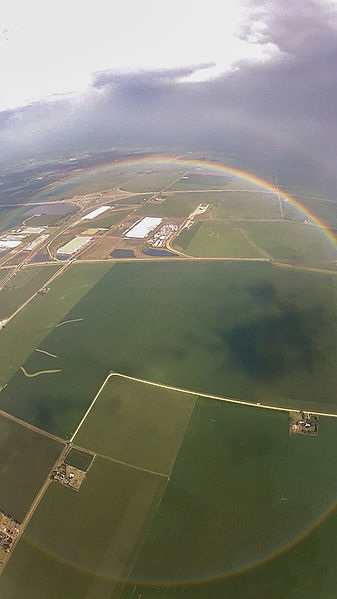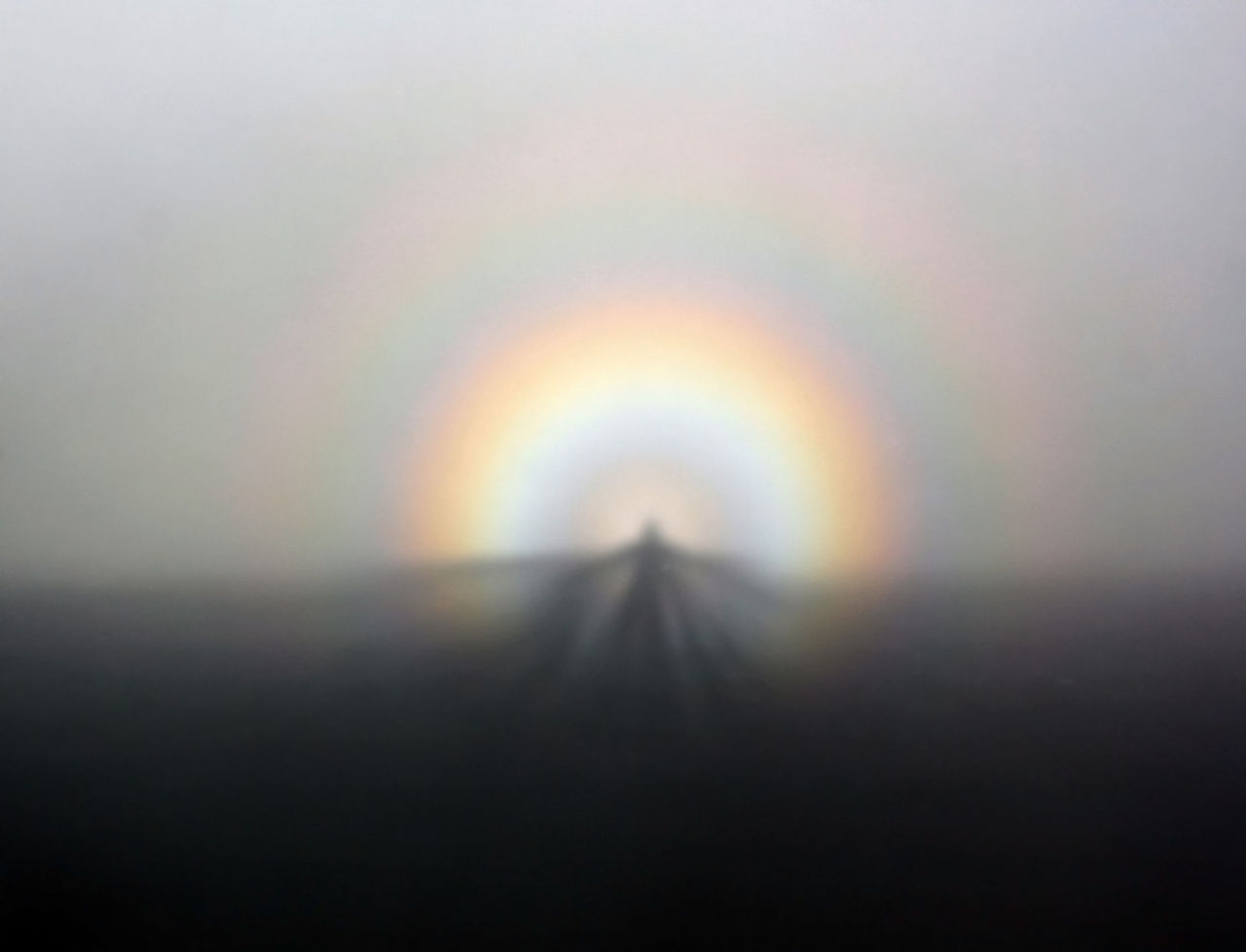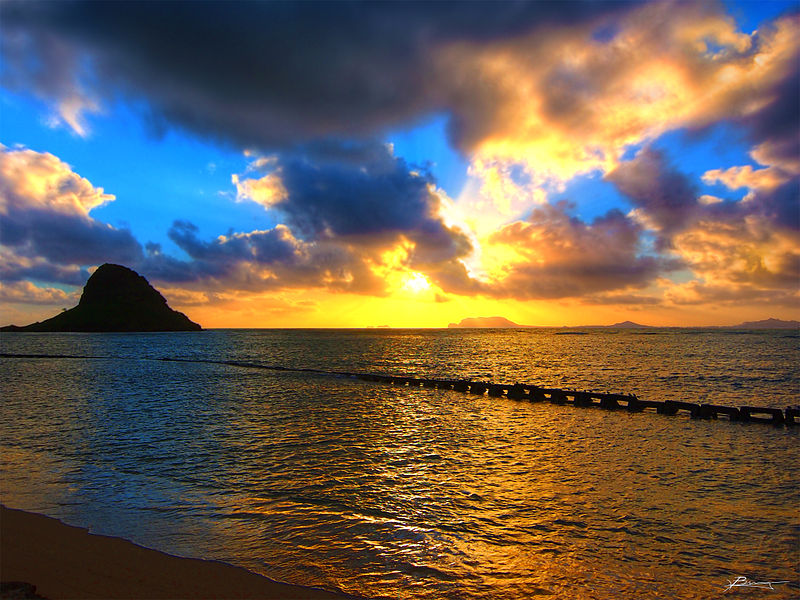Carol (my magazine designer) and I were marveling at the magic of moonbows the other day, and she told me that she’d seen a round rainbow while vacationing in Hawaii. That’s right—a full circle—like this one, photographed from the window of a plane …

Photo by Steve Kaufman via Wikipedia
Or this one, photographed from the Golden Gate Bridge, which includes something called a Brocken spectre …

Photo by Brocken Inaglory via Wikimedia Commons
Spectacular!
“Rainbows are both beautiful and rare, but we see more than our fair share of them in Hawaii because our mountains and trade winds combine to produce rain on the slopes of the mountains,” explains Richard Brill of Honolulu’s Star Advertiser. “Because of the orientation of the islands, it is not unusual for the low morning or afternoon sun to shine under clouds over the mountains and illuminate rain beneath the clouds.”

Photo by Paul Bica via Wikimedia Commons
After all, Honolulu is known as the “rainbow capital of the world.”
“In theory, every rainbow is a circle, but from the ground, only its upper half can be seen. Since the rainbow’s center is diametrically opposed to the sun’s position in the sky, more of the circle comes into view as the sun approaches the horizon, meaning that the largest section of the circle normally seen is about 50 percent during sunset or sunrise,” Wikipedia informs. “Viewing the rainbow’s lower half requires the presence of water droplets below the observer’s horizon, as well as sunlight that is able to reach them. These requirements are not usually met when the viewer is at ground level, either because droplets are absent in the required position, or because the sunlight is obstructed by the landscape behind the observer. From a high viewpoint such as a high building or an aircraft, however, the requirements can be met and the full circle rainbow can be seen.”
But, wait … you can actually create your own mini version of a full-circle rainbow with the mist from an ordinary garden hose (you don’t even have to be in Hawaii to do it).
Here’s how:





















































I never knew about round full circle rainbows. Incredible! I would love to see one out of an airplane window sometime. What a treat that would be. Clicking on the make your now link would be a fantastic science experiment for kids as it allows the discussion of the light spectrum, optics, physics and a host of other details to expand the discussion. You could get a two week classroom lesson plan out of this one experiment.